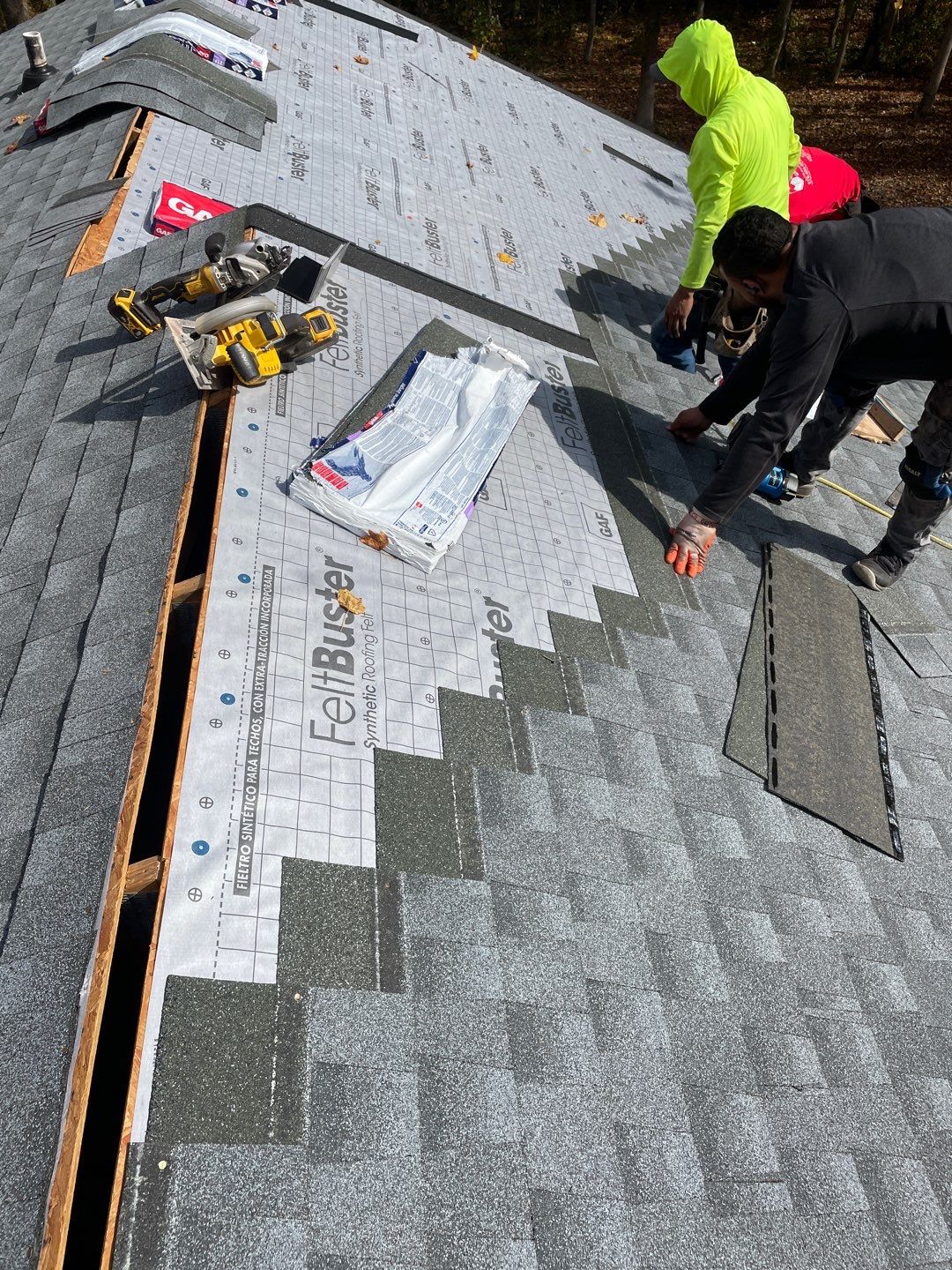Reviewing the Solutions Supplied by Roofing Companies in Gainesville Florida
Reviewing the Solutions Supplied by Roofing Companies in Gainesville Florida
Blog Article
Ideal Practices for Ensuring Correct Roof Covering Air Flow
A well balanced consumption and exhaust air vent proportion, typically 1:300, plays a crucial duty, with intake vents ideally put at the reduced side of the roof for awesome air entrance and exhaust vents at the height for warm air leave. Keeping insulation away from vents is critical to prevent air flow limitation.
Understand Air Flow Basics
Correctly comprehending air flow essentials is crucial for making certain the long life and effectiveness of roof systems. Effective ventilation minimizes dampness buildup and temperature level extremes in the attic room, both of which can bring about substantial architectural damages over time. A well-ventilated roof covering aids in preventing typical issues such as mold and mildew development, wood rot, and ice dams, which can endanger the integrity of the roof covering products and the underlying frameworks.
The primary goal of air flow is to assist in the motion of air, enabling a constant exchange between the outside and interior settings. This equilibrium is accomplished via a combination of intake and exhaust vents that collaborate to maintain optimal airflow. Intake vents, normally situated along the eaves or soffits, allow fresh air to enter the attic room area, while exhaust vents, frequently positioned at or near the roof ridge, make it possible for warm, moist air to run away.
Key aspects affecting the performance of roofing system air flow include correct positioning, appropriate sizing, and guaranteeing that both consumption and exhaust vents are unblocked. Regular inspection and maintenance are vital to recognize prospective clogs, damages, or ineffectiveness in the air flow system, consequently securing the roof's efficiency and longevity.
Sorts Of Roof Covering Vents
Roofing system vents play an essential duty in keeping effective attic ventilation and, by expansion, the total health and wellness of the roof system. Various kinds of roof covering vents are available, each with one-of-a-kind advantages customized to specific roof covering needs.

Soffit vents are mounted under the eaves and operate in tandem with roof covering vents to make certain a balanced intake and exhaust system. By enabling cooler air to enter from below, soffit vents assist in the expulsion of hot air via top vents. Gable vents, situated on the outside wall surfaces of the attic room, offer another reliable service, particularly in homes with gable roofing systems.
Assess Your Existing Air Flow

Following, take into consideration the age and problem of your roof covering products and air flow elements. Older systems may not follow current building regulations or might have degraded gradually, lowering their efficiency. Conduct an extensive evaluation to determine any signs of wear and tear, such as rust, damages, or spaces that might endanger the system's performance.
In addition, measure the attic temperature level and humidity degrees. High temperatures and humidity can suggest inadequate air flow.
Installment Best Practices
Effective installment of roofing ventilation systems is paramount for ensuring optimum efficiency and durability. Correct installment starts with understanding the certain ventilation get redirected here needs of the roofing system and the building it covers. This involves calculating the correct ratio of consumption to exhaust vents, normally sticking to the 1:300 policy, which states one square foot of ventilation for every single 300 square feet of attic room floor area.

Consumption vents should be installed at the roof covering's reduced side, usually in the soffits, to permit cool air to enter. Exhaust vents, on the other hand, must be set up near or at the roofing's top to assist in the exit of warm, moist air.
Seal all vent links carefully to stop air leakages and possible water seepage. Usage top notch materials and follow producer standards to make sure durability and performance. Additionally, integrating ridge vents with baffles can dramatically improve air movement efficiency by protecting against wind-driven rainfall and snow from getting in the attic room.
Ultimately, accurate installation of roofing ventilation systems mitigates possible concerns such as mold and mildew growth, ice dams, and architectural damages, ensuring the roofing's honesty and the building's general wellness.
Regular Upkeep Tips
Uniformity in upkeep techniques is basic to guaranteeing the long-term effectiveness of roof covering ventilation systems. Throughout these evaluations, guarantee that vents are totally free of particles, nests, and other blockages that might restrain air movement.
Cleaning the vents is an additional important task. Utilize a soft brush or a vacuum cleaner to get rid of dirt and particles from consumption and exhaust vents. Beware not to harm the air vent screens or louvers throughout the process. Furthermore, examine the attic area for any kind of indicators of water damage, which might endanger the stability of the roof.
Proper insulation is just as crucial. Guarantee that attic insulation does not obstruct the vents, as this can significantly limit airflow. If any type of insulation has moved or cleared up, reposition or change it to preserve an efficient barrier.
Lastly, replace any kind of damaged or missing out on parts without delay. Damaged vents, fractured shingles, or tatty blinking can all contribute to inadequate a fantastic read ventilation and must be dealt with immediately. Normal upkeep ensures that the roof air flow system operates efficiently, thereby extending the life expectancy of the roof itself.
Conclusion
Guaranteeing correct roof ventilation is extremely important for maintaining the performance and longevity of a roof. Adherence to the 1:300 consumption and exhaust air vent ratio, paired with the calculated placement of vents, is vital. Routine semiannual assessments, particles cleaning, and making sure insulation does not obstruct air movement are important practices. Carrying out these finest techniques will certainly foster a well-ventilated roof covering system, thereby alleviating potential concerns associated with moisture accumulation and extreme warm, inevitably prolonging the roof covering's life expectancy.
A balanced consumption and exhaust vent proportion, frequently 1:300, plays a crucial duty, with intake vents ideally positioned at the reduced side of the roofing for great air entrance and exhaust vents at the peak for cozy air visit the site leave. Consumption vents, generally situated along the soffits or eaves, permit fresh air to get in the attic room space, while exhaust vents, often situated at or near the roof ridge, allow hot, moist air to leave.
Soffit vents are installed under the eaves and work in tandem with roof covering vents to guarantee a balanced intake and exhaust system. By permitting cooler air to enter from below, soffit vents facilitate the expulsion of hot air with upper vents. Adherence to the 1:300 consumption and exhaust air vent ratio, paired with the strategic positioning of vents, is crucial.
Report this page